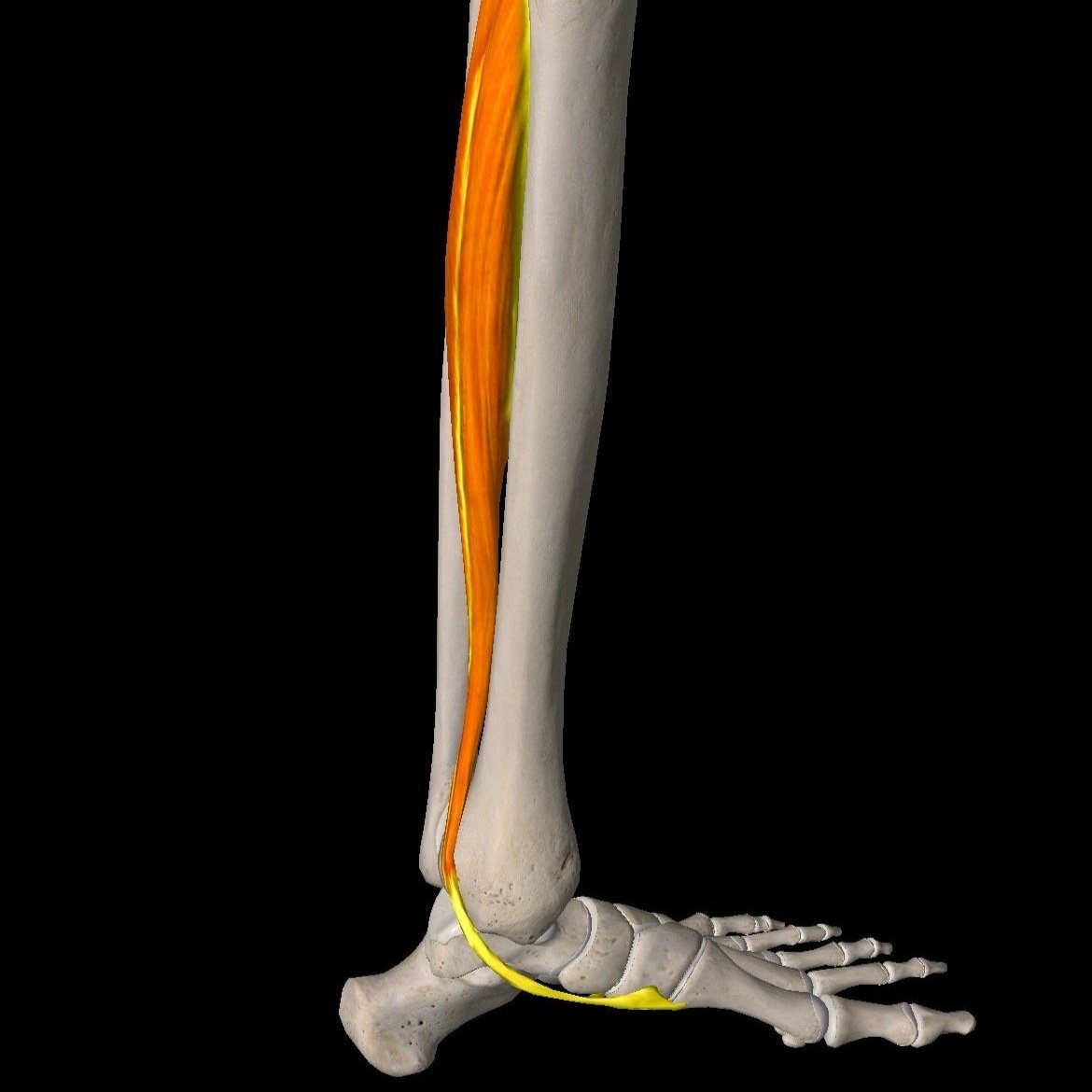All About Shin Splints
Do you ever get pain on the inner part of your shin towards the lower leg from running? It could be shin splints, or if you want to impress your friends with your medical jargon, Medial Tibial Stress Syndrome (MTSS). Runners can be very susceptible to this because of the repetitive nature of the sport.
We can’t learn about shin splints without a little anatomy lesson…
Shin splints involve, obviously, your SHIN BONE. This bone is called your tibia. Maybe you remember it from high school anatomy dissections. Maybe you remember it from when you walked into the coffee table on your friend’s porch. The Tibialis Posterior Muscle runs along the back of your tibia (and fibula) and wraps around to the arch of your foot as it transitions from muscle to tendon. Which is why the arch of the foot is often assessed with this condition.
Tibialis Posterior Muscle
It is theorized that shin splints are caused by overuse of this muscle, tugging on the tibia (shin bone) and causing inflammation where the muscle attaches to the bone.
Quick aside on arches… just because you have flat feet does not necessarily mean you need orthotics in your shoes. Pronation is a natural part of gait. The issue comes when your muscles are not strong enough to withstand the forces we are putting through it. Sometimes all you need is to strengthen those muscles. Sometimes you do need orthotics. ORTHOTICS SHOULD NOT BE THROWN OUT LIKE A PRIZE ON OPRAH AS A FIX ALL FOR EVERYTHING. Okay what were we talking about? Shin splints. Right.
Pain from shin splints usually affects the lower third of your shin, spans more than 5 cm and hurts when you push on it. If it is more localized to one little spot, we might be concerned about other options such as a stress fracture which can happen if spin splints become chronic and are not allowed to heal. Shin splint related pain usually worsen with repetitive movements such as running, jumping and dancing.
So how do you get it? Shin splints are generally an OVERUSE injury. Maybe you did too much, too soon. Perhaps you ran faster or further than you are used to and did not give your body enough time to rest and build itself back up in between workouts.
What can you do about it?
There are several ways to treat shin splints. I wish there were a magic couple things you could do to fix them. Unfortunately everyone is different and what works for your friend might not work for you. It is best to see a specialist to assess you and your body.
Of course I would never leave you hanging without some ideas of what we can do:
Running Gait Retraining: having someone analyze your gait to see if there are small ways to tweak your form that could take stress off this area
Dry needling: may help to manage pain and improve healing
Managing your training load to keep running but allow adequate time for recovery
Strengthening the hip and core: for some, the foot may be enduring increased stress because of lack of control further up the chain.
Strengthening the foot and ankle to improve the tissue tolerance
Keeping your shoes up to date
Here are a few of my favorite exercises:
1) Tennis ball heel raises: Place a tennis ball in between your ankles and maintain pressure inward towards the tennis ball as you raise up onto your toes.
2) Tip Toe Farmer’s Walks: Grab weights in both hands and walk on your toes, keeping the knees bent slightly.
3) Resisted ankle inversion: loop a light to medium resistance band around your foot and move your foot inward against resistance.
I hope you found this helpful! As always, if you are having pain or want to prevent it, see a physical therapist!
*Information is for educational purposes only and is not a substitute for medical advice.







